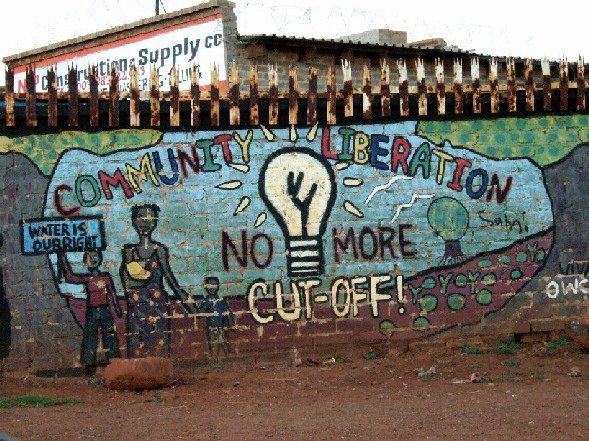This interview is one of four arranged with authors of new books put out by Island Press, a non-profit publisher. See an earlier interview here. Content is sponsored by Island Press.
As the U.S. Department of Transportation’s senior policy adviser for civil rights for nearly a decade, and later executive director of the Washington State Human Rights Commission, Marc Brenman lives and breathes social justice issues. Along with co-author Thomas W. Sanchez (with whom he also collaborated for 2007’s The Right to Transportation), Brenman saw his newest book, Planning as if People Matter: Governing for Social Equity, released this summer.
Here, the Evergreen College professor talks about diversifying the planning field, the troubling gap between environmentalists and civil rights advocates, and why he isn’t too thrilled about high-speed rail or spandex-clad cyclists.
Next American City: In the preface to Planning as if People Matter, you write, “we recommend that planners and public administrators critically examine the process of governance.” In your opinion, have planners been too insulated from what happens in other areas of the public sphere?

Marc Brenman: Well, I do. Sometimes planners engage in public involvement and public participation activities, but often those activities are not really sincere. In other words, when people go through the trouble of participating, attending meetings or sending in comments, members of the public then get disappointed, because it seems like nothing that they say changes anything that the planners were planning on doing anyway. And so, I think planners have to be a whole lot more sincere about public involvement and participation efforts and not just engage in them on a pro forma basis.
NAC: In one chapter, you write about the need for cultural competency. Is there a disconnect between planners and the people for whom they plan?
Brenman: As we saw with what the Republicans experienced [on election day], there is a disconnect between a lot of people in governance and the changing demographics of the United States. A lot of people in the planning and public administration field don’t really know who’s in their service area, and don’t pay attention to the disaggregated statistics on racial-ethnic breakdowns and breakdowns by income, for example. That’s the first major step in terms of cultural competence: Understanding the culture that they work in, viewed broadly.
NAC: The barriers to diversity in the planning world are numerous and intertwined — you not only have race and class, but education, geography, the digital divide. On this front, can we move only incrementally, planning firm by planning firm or policy change by policy change? Or is there a bigger solution that we can turn to [in order to] start addressing this?
Brenman: I work with a person named Darya Funches, who is an organizational development expert and the chair of the Organizational Development Network, and she believes that to achieve diversity in institutions you, don’t change the institution. You change the individuals within the institution, and I think she is making a very important point. My approach is usually more from an institutional perspective, so I think we have to work on a variety of levels, and one is to work with students coming through the pipeline.
But there are also changes that have to occur within the planning profession. There are a lot of white men in the planning profession, and there are a lot of environmentalists, and sometimes the divide in the planning profession reflects the divide between environmentalists and civil rights advocates generally, in that environmentalists tend to be a lot whiter and more middle class than civil rights advocates. I’ve been trying for years to get these various groups to talk to each other, and it’s extremely difficult.
For example, the Sierra Club is a very large and important and powerful environmental organization. The entire Sierra Club has exactly one person who works on environmental justice issues. Her name is Leslie Fields. She’s a terrific person. She does terrific work, but she is spread extremely thin. And yet, environmental justice is the confluence of civil rights issues and environmental issues. One would think that there would be more people and organizations who work on environmental justice issues. Some organizations — big organizations — are facing the same catastrophe that the Republican party is facing, and that is if they don’t wake up to the changing demographic in the United States, they are going to find themselves with a declining and aging Anglo face.
NAC: What is the cause of environmental groups largely ignoring environmental justice issues?
Brenman: I’ll give you a snarky answer and a serious answer: The snarky answer is that the environmentalists are wearing too much spandex and padded bottom bicycle suits. There’s this practically fanatic bunch of *bicycle advocates who seem to be leading and running environmental movements in this country, and their perspective seems to be limited to the few feet in front of their bicycles. They are very heavily young, Anglo and male, and wear those funny outfits. So maybe the spandex fits a little too tight… I apologize, Matt, if you’re a fanatic.
NAC: I do cycle, but I don’t wear spandex.
Brenman: The serious answer is more in the nature of the environmental movement growing out of a very middle-class, Anglo perspective. A lot of lower-income people, a lot of African Americans, Latinos [and] Native Americans don’t have the luxury of getting involved because they are more involved in living day to day. There are some examples of crossovers, and there are tremendous opportunities for crossovers, but that’s part of the problem.
You see this in something like the Endangered Species Act. Compare it with the various civil rights laws in the United States. The Endangered Species Act provides a great many protections for endangered, non-human animals. It provides greater protection to endangered animals than the civil rights laws provide protections for endangered people. You can stop a project using the Endangered Species Act. You can get injunctive relief if you can show that there is a good possibility that a given project is going to endanger an endangered species. You can stop a project in its tracks.
You cannot stop a project in its tracks using the civil rights laws. With the civil rights laws, you have to show that people have already been harmed. You have to show the adverse effect. There is practically no injunctive relief available under the civil rights laws. I think that is a good example of the divide between environmentalists and civil rights activists — their access to legal remedies. Years ago I was involved in a case involving a pipeline in Texas, this 50-year-old pipeline that a part of which ran underneath an elementary school in east Texas. The elementary school was about 99 percent low-income Hispanic kids. Another part of the pipeline ran through an area where there was an endangered salamander. The civil rights advocates could not get the route changed or get a new pipe built to protect the kids, but the environmental advocates were able to get 15 miles of new pipe built around the endangered salamander area and a million dollars a mile for new piping. Now, my recommendation was not taken seriously, which was that the Latino kids be issued tee-shirts saying “I am an endangered salamander.”
NAC: We had a writer who had an article about equity and creative placemaking. He essentially argued that those involved in placemaking must always ask themselves the question “who benefits?” in order to ensure equitable outcomes. I was hoping that maybe you could expand on this for us. Let’s say you have a project in the works and realize that only certain segments of the population will reap its benefits. At that point, what steps can you take to change your approach to make sure this doesn’t happen?
Brenman: An interesting example of this is light rail. There have been one or two interesting studies that show that light rail primarily benefits whiter and higher income communities, and it’s been Toonerville Trolleys for the past 10 or 15 years. Trying to change something like that isn’t extremely difficult, but the process for getting positive benefits for broad and specific communities is to find out what the people’s needs, wants and desires are in an area. This gets back to what we were saying earlier about public involvement and participation, which is actually getting out into the community and finding how people live and what languages they speak, and where they congregate and what routes they take, and what would be helpful to them.

Brenman
NAC: In lieu of light rail, what are some other options that transportation planners can explore?
Brenman: The most obvious is a very unsexy solution, which is the type of public transportation that recovers the highest percent of its costs at the fare box: Plain old diesel buses. As you array the types of public transportation or transportation generally on a chart, the snazzier the transportation the more highly subsidized they are, and the greater the ridership by higher-income white people. For example, the ferries in San Francisco Bay cost about 20 bucks a ride, but the charge of that ride is only about $4.50. In other words, they are very, very highly subsidized, whereas a good bus system recovers about 40 to 60 percent of costs at the fare box.
Instead, what we see are bus systems doing a very good thing — going out and buying hybrid, diesel electric buses, natural gas buses —and those buses are nice and cute, but they cost about 50 percent or more than a regular diesel bus. And so, that money could be spent on additional service and buying additional buses, but instead the decisions that are made are to invest resources in things that are environmentally sound — which is good and which has some benefits for people of color, but are not nearly as great as the benefits would be from investing that money in running more buses and restoring the trust that has been made in house service and frequency.
NAC: A big topic among transportation types is bus rapid transit. Do you have any attitudes about that in general?
Brenman: Bus rapid transit is a good compromise if it’s done right. It has to have a number of features and be more like the BRT used Curitiba and some places in South America: It’s got to have dedicated lanes only for the buses. It’s got to have covered stations. It’s got to collect the fares before you get on the bus. It’s got to run frequently. If you want to get people out of their cars, you have to provide a service that is almost as good them riding in their cars — which is to say it’s got to be safe and frequent and not make people stand out in the snow and the rain and the heat. Yet another benefit of buses is that as demographics change and destinations change, routes can be changed. Once you put rails down, you can’t change them except at great expense.
NAC: You and Thomas Sanchez co-authored a book about equity and transportation in 2007. I’m wondering if the paradigm has shifted in the last five years. Has the situation changed in terms of public transit access among marginalized populations?
Brenman: No, actually. It has shifted, but it hasn’t shifted in a positive way. It shifted in several negative ways. One is that with revenue downturns, there have been tremendous cuts in public transportation across the country, especially in buses. Many bus transportation providers have cut their services in a way that disadvantages low-income people and people of color by restricting the numbers of trips, house services [and] overnight services.
Also, there has been a lot of attention paid to high-speed rail since we wrote that book. Now I feel that high-speed rail is phony and mistaken for a number of reasons. A tremendous amount of money has been thrown into it. California is throwing pretend money into it, and high-speed rail has no benefits that I can find for people of color or low-income people. So at least in two ways, the situation has gotten worst. There is less physical mobility in the United States, and because there is less physical mobility there is less social mobility. We see that in the widening income gap.
NAC: Now that President Obama has been reelected, urbanists can breathe a small sigh of relief — at least we still have HUD and Amtrak. Is there anything, at this point, that could be done at a national level that would improve equity in cities? Or is mostly left up to municipalities to do the heavy lifting?
Brenman: The federal government, of course, is the big funder in large infrastructure projects, and we have seen a couple of major things in the last week, Hurricane Sandy and the election. Hurricane Sandy has at least temporarily raised some consciousness about climate change and, of course, climate change, the rising sea levels and global warming have a more adverse effect on people of color and low-income people than on other people. To do much about that is going to require major infrastructure investment. There is a big question as to whether the will and the resources exist to make those major investments, to do things like build barriers and sea walls to keep the water out of low-lying cities and subway tunnels.
So the needs are great. The federal government will have to be involved, but I’m not at all sure that even with another four years of a Democratic administration — but with a relatively unchanged House and Senate — the will and resources are there to make those necessary changes.
NAC: When I was reading your book I got the sense that you were advocating for a more holistic approach to planning — taking into account not only factors traditionally associated with the field, like transportation and the built environment, but seeing it as something that intersects with many other realms of governance.
Brenman: We’re talking about a holistic approach in several ways. One, of course, is how different infrastructures work together. For example, it takes the total efforts of housing, education and transportation to keep people separate. So when you talk about social equity, social justice and integration, those three kinds of infrastructures have to work together — because it took those infrastructures working together to separate people and keep people separated.
Then there’s a conceptual holistic approach, which is making sure that social equity is at the table. We talk about that with LEED requirements and green requirements: There have been lots of green and environmental efforts but many, many fewer in terms of the people side, the social equity side. And then on a very specific level, say in transportation planning, you rarely hear about virtual transportation. You hear a lot about bicycling, and pedestrian efforts, and reducing congestion, better mileage vehicles, public transportation. You don’t hear all that much about how transportation infrastructure interacts with communications infrastructure so that there doesn’t need to be as much physical transportation. People can telecommute, teleconference, telemedicine. We witnessed that in the federal stimulus bill that put tons of money into fixing potholes and fixing roads, but didn’t put money into rebuilding the nation’s electrical grid, which is essential for alternative energy or into bringing high-speed broadband to all parts of the country. So these different infrastructures need to work together both physically and conceptually.
NAC: Suddenly, after Sandy, we saw the mainstream press and a few high-level politicians focus on infrastructure. I recently read that New York Gov. Andrew Cuomo has made it clear that he is finally taking ownership of the MTA, which he hadn’t really done previously. Why does it take a natural disaster for local leaders to dedicate themselves to improving infrastructure, access and equity?
Brenman: These big events where, unfortunately, a lot of people suffer and there is a lot property damage and destruction and media attention, those are the things that grab hold of our minds and our hearts. I get it, I understand it. I remember it with Hurricane Katrina. Before Hurricane Katrina, I never used to like to talk to about institutional racism — and I’ve spent my whole adult life in the social equity and social justice business. But after what happened with Katrina, where so many African Americans got left behind and suffered because of extremely poor institutional and governmental planning on all levels, I started openly talking about it. If a disaster event is going to cause one person to change his views, I guess by extension it can cause large numbers of people to change their views.
Now, I do think that some of the rhetoric about climate change has been exaggerated, because we don’t know if Hurricane Sandy was just a random meteorological event. But certain things, like rising sea levels, are obviously happening because we can actually see them in low-lying areas. These events provide a kind of incontrovertible, physical evidence, and Tom Sanchez and I advocate for making evidence-based decisions.
















